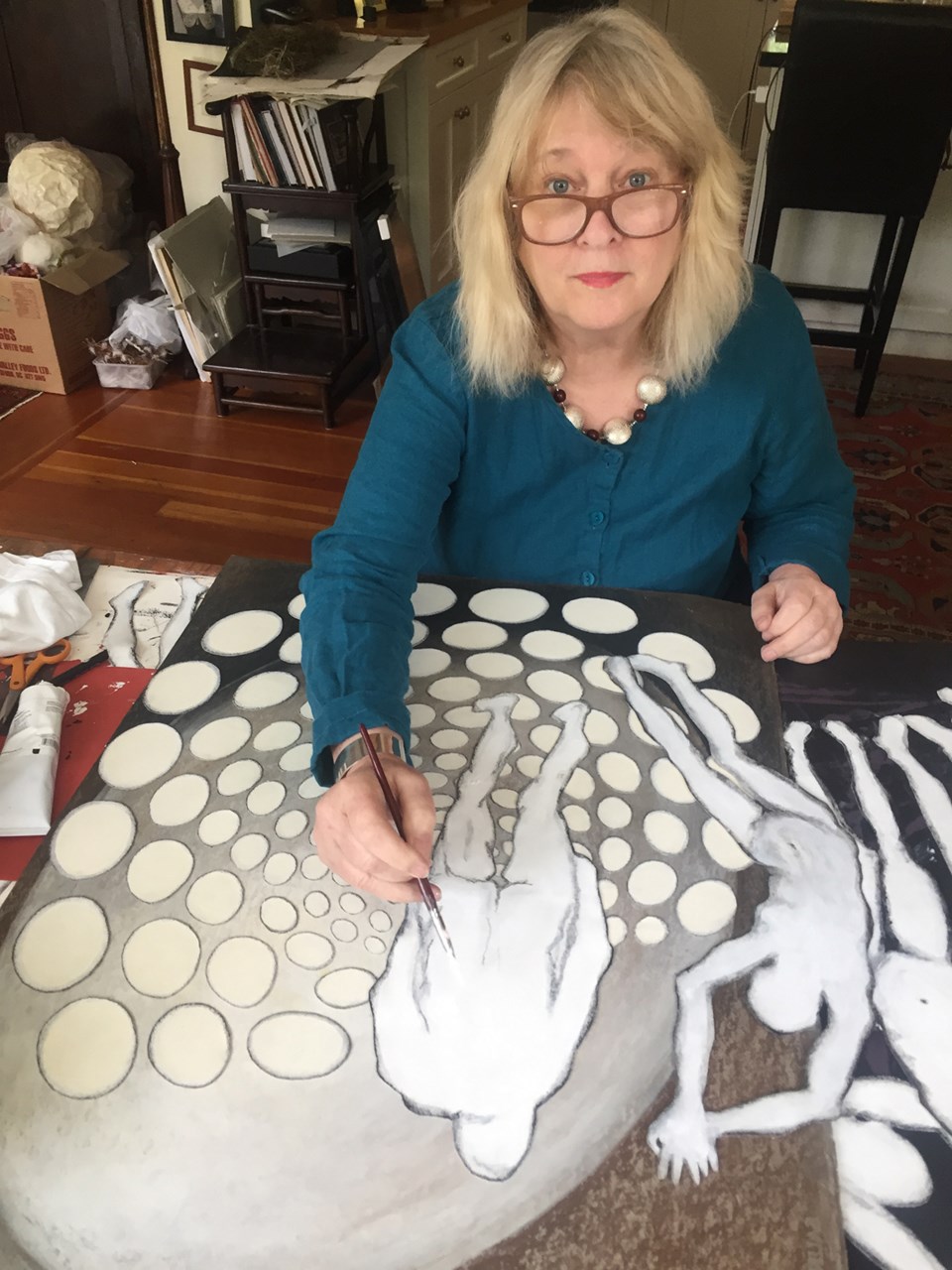Seven years ago, after a lifetime of working in fashion, sculpture, motion picture wardrobe, masks, and “wool everything,” Bonnie Campbell took a break from the pressures of deadline-based art. What she found in the space she carved out for herself was a philosophy of art creation based on taking it slow.
Granted, this was never to be a cessation of creating for Bonnie, for whom, in speaking with her, it is evident that “making stuff” is an immutable impulse and way of life, deadline or no.
In her casual jewelry-making an idea occurred to her to craft felted wool beads. Having worked in wool for fifty years, but never in felting, a new creative path beckoned as she was compelled to expand beyond beading to sculpture, felting large beach rocks, and then giant eggs. Although she had no exhibition end-goal in sight at the time, she reflects on the significance of the rocks as “‘Still life,’ but transformed into eggs, which are all about life,” signalling the beginnings of the varied creations that were to make up her collection and show of sculptures and cut canvas paintings, titled “Umbilicus.”
Inspired by her daughter’s pregnancy announcement, Bonnie’s eggs gave way to a proliferation of felted umbilical cords, wombs, and babies. The babies grew and became more active.
“I completely followed the rhythm and pace that this led me to.” This proved to be a very valuable, internal, private undertaking. “It was about doing the best, making them the best they could be. Pace was important. I worked daily for seven years, and felted constantly.”
Bonnie, having always had an interest in health food and the slow food movement, discovered for herself a nourishing and meditative process of creating which she called “slow art.” She has since discovered that this term was simultaneously being developed in reference to a movement against rapid and mindless consumption of art, now embodied as Slow Art Days at galleries worldwide, where art is taken in by the public in no less than ten minutes per piece. For her, both the creation and consumption of art benefit from this approach.
“Art is important because it’s an exploratory process that helps us understand more about who we are. And we don’t really give it its due, we don’t give it the time that it deserves, so we don’t get the rewards of art in our life. We don’t go slowly, we don’t look carefully, we don’t listen intently. …Slow art requires your participation, requires that you engage with it.”
In the presence of “Umbilicus,” one realizes how much art can tell the viewer, if one has the time and intention to listen. As a former counsellor with a particular interest in Jungian psychology, it is no surprise that Bonnie’s art is infused with symbolism and metaphor: Eggs, representing life, beginnings, fragility; wombs as places of magic and safety; the pelvis being both a container and a gateway into life; and women’s bodies, in Bonnie’s words, are simply “amazing, miraculous, beautiful.”
But she is reluctant to over-explain. Of importance to Bonnie is allowing space for the viewer to come to their own conclusions and find personal meaning from her art. “You want to be with the thing. Like a joke or magic trick, you don’t want people to explain it to you.”
For viewers who come to see Umbilicus, showing for the first time on Bowen Island, Bonnie hopes they will take the time to consider the works at the speed they were created: slowly.
Umbilicus is exhibiting at the Bowen Island Arts Council’s Gallery @ Artisan Square, July 19 - August 13, with an opening reception on July 22, 5-7pm.



